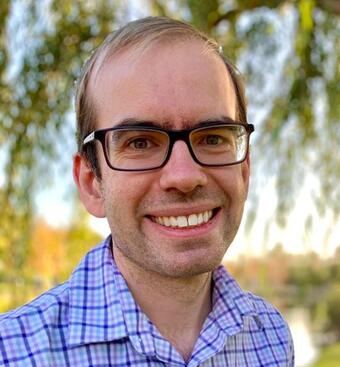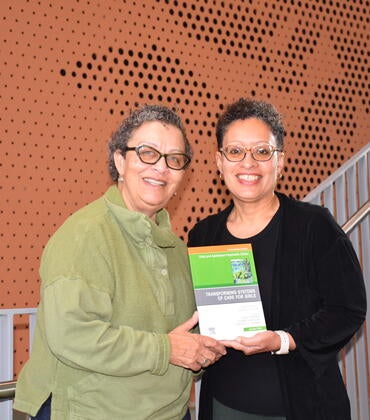
Only about 5% of the universe consists of particles and forces well understood by modern physics. The rest remains a puzzle — one that involves dark matter, an invisible substance that shapes galaxies and cosmic structures, and neutrinos, tiny particles that enabled production of chemical elements moments after the Big Bang.
A $4 million grant from the John Templeton Foundation will allow a team of scholars from the University of California, Riverside, University of Southern California, and Carnegie Observatories to establish a research hub called LARC (Lyman-Alpha forest Research Collaboration) to better understand these mysterious elements. UC Riverside will receive $1.1 million.
The researchers will develop computer models to simulate the birth of structure in the universe, testing different theories about how galaxies form. These computer-grown models of the universe will be compared to new observations, taken by scientists at Carnegie Observatories using large telescopes that map the three-dimensional structure of intergalactic gas. Together they will reveal the hidden universe and uncover the quantum properties of its constituents, including dark matter and neutrinos.
Simeon Bird, an associate professor of astrophysics at UCR, will be co-leading this effort alongside the hub's lead, Vera Gluscevic, an associate professor of physics and astronomy at USC. Bird said he is excited the collaboration assembles a uniquely qualified group of scholars.
“The most exciting part is the team, experts in a vast range of disciplines, including theoretical and observational astrophysics, philosophy, computer science, and even interactive data visualization” he said. “We’ll make substantial advances in simulation technology, which will help us understand how we can use the neutral hydrogen, the most basic and abundant form of the gas in the intergalactic space, to trace the invisible components of our universe.”
Gluscevic said LARC is designed to pursue the deepest questions about our universe and the essence of human knowledge: “What is the fundamental nature of matter and spacetime? What forces shape physical reality? What is the meaning of ‘discovery’ when AI and simulation guide the pursuit of truth?”
LARC will involve numerous scholars from multiple disciplines. At UCR, this will include Christian Shelton, a professor of computer science and engineering, who will develop new artificial intelligence techniques to speed up computer simulations and aid in the search for the hidden universe.
The research team will include philosophers and visual artists at USC who will examine how new scientific methods may change our understanding of how we perform scientific inference and generate knowledge.
The wide scope of this project is in keeping with the ambitions of John Templeton, a maverick investor who launched the foundation with the aim of funding advances in scientific discovery and inspiring awe and wonder for the universe.
This news release is a modified version of a USC news release written by Margaret Crable.
Header image shows the LARC team. Credit: LARC.




